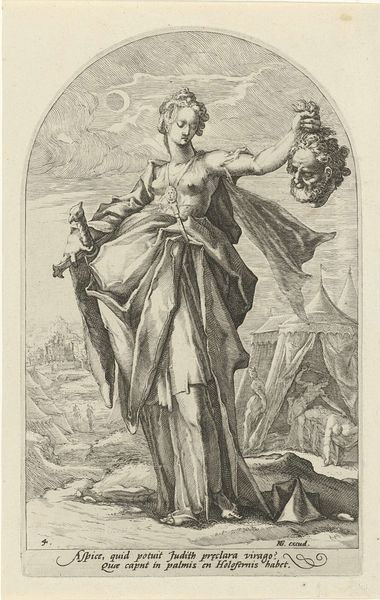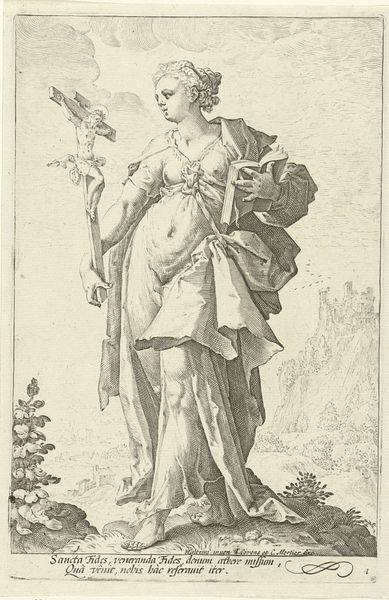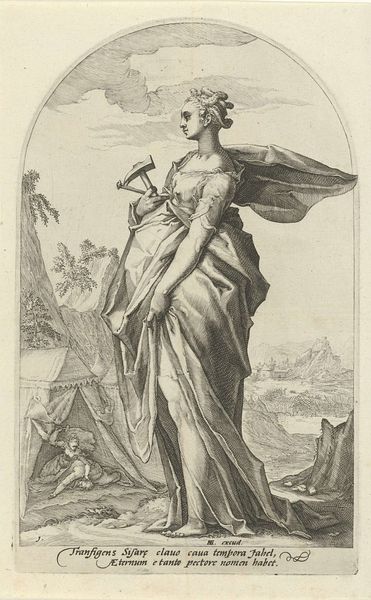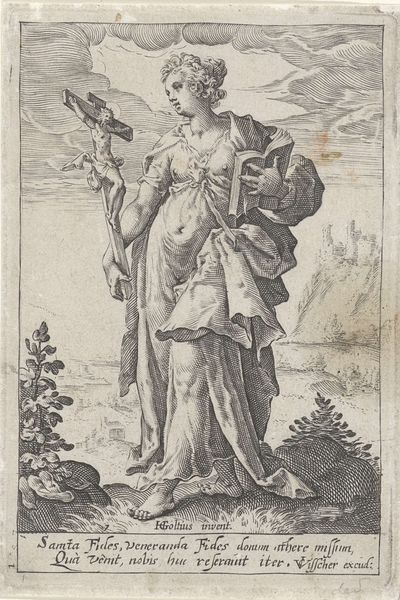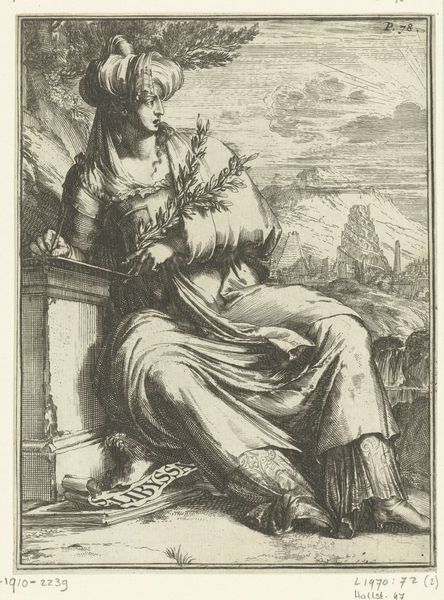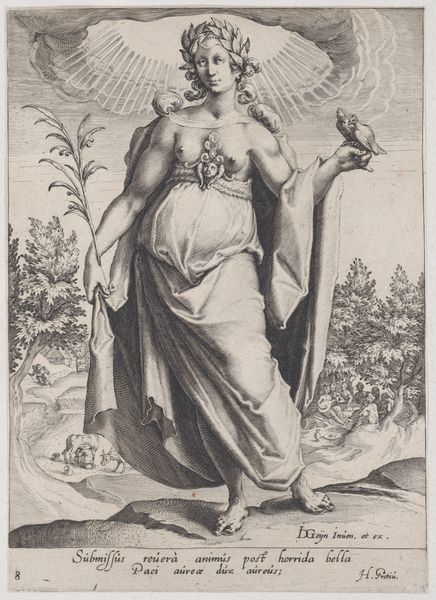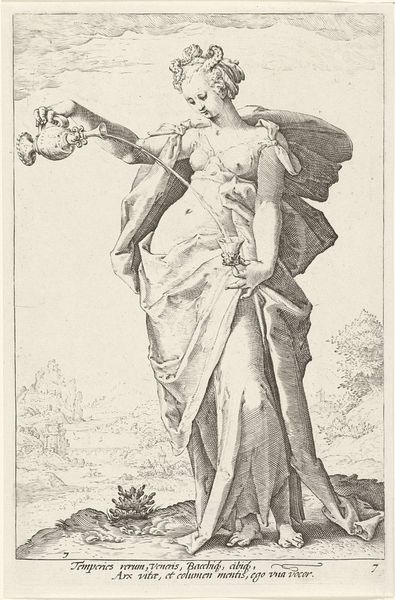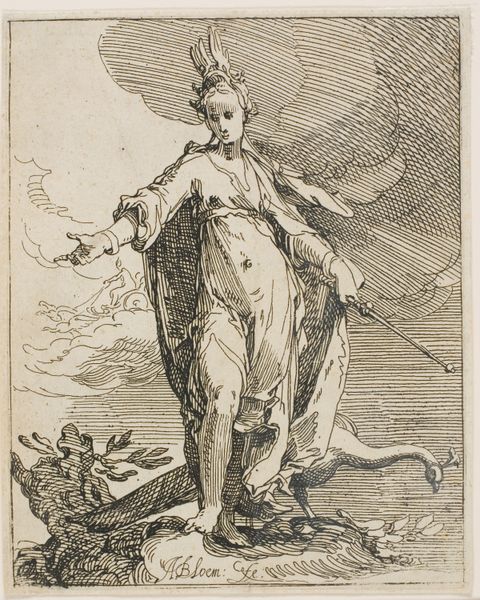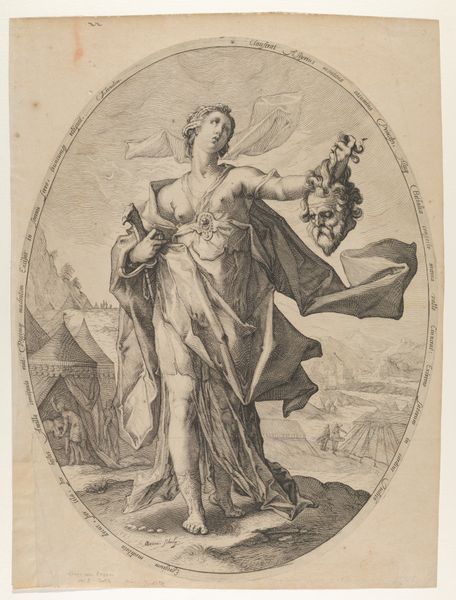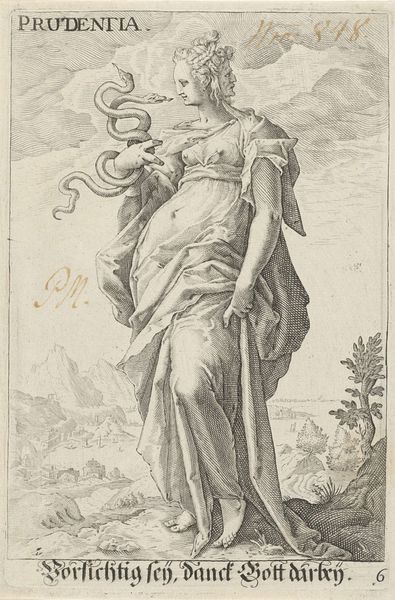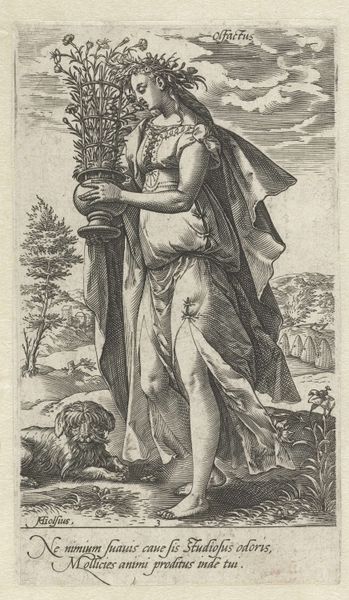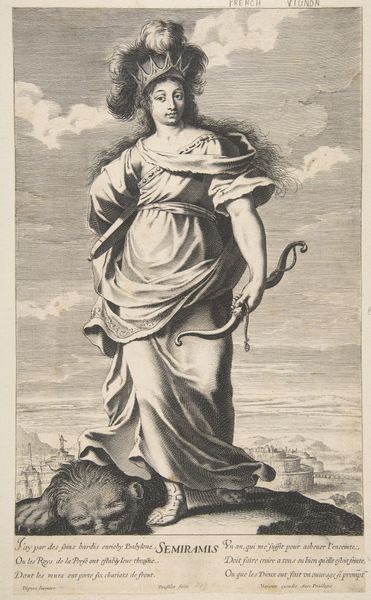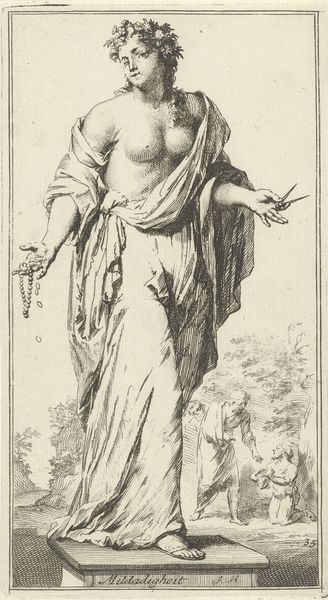
engraving
#
portrait
#
allegory
#
old engraving style
#
figuration
#
11_renaissance
#
line
#
history-painting
#
northern-renaissance
#
engraving
Dimensions: height 217 mm, width 144 mm
Copyright: Rijks Museum: Open Domain
Editor: This is *Hoop (Spes)*, an engraving from between 1585 and 1589 by Jacob Matham. The figure is bathed in light. The sharp lines give a very distinct impression. What do you see in this piece? Curator: Focusing on the formal qualities, the linear precision of the engraving defines form and texture. Note how Matham uses hatching and cross-hatching to create tonal variation and the illusion of three-dimensionality. The composition is built around the central figure of Spes, and consider how the billowing drapery creates a sense of dynamism that is juxtaposed against the rigid geometry of the anchor and the landscape. Editor: That interplay of dynamism and geometry is fascinating. How do you interpret the anchor in that context? Curator: The anchor provides visual weight but is further balanced by the softness of the figure’s flesh and voluminous cloak. How do you see this influencing its emotional impact? Editor: The textures do invite contemplation. What else defines the composition? Curator: Consider how the artist uses contrasting textures - the roughness of the earth against the smoothness of the skin. We have line quality which shifts from the dense, dark strokes defining shadow to the delicate, light touches suggesting luminosity. The radiance emanating from above draws the eye upward, creating a visual hierarchy and guiding the viewer’s gaze. It’s about dissecting these compositional choices. Editor: That makes a lot of sense. Thanks for sharing this viewpoint! Curator: Indeed, by emphasizing the elements and principles, we start seeing the structure and function within art’s historical forms.
Comments
No comments
Be the first to comment and join the conversation on the ultimate creative platform.
